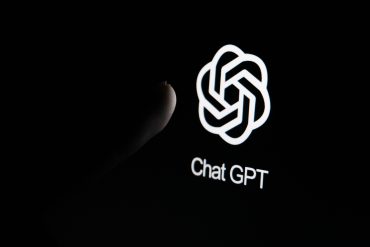
- AI
ChatGPT API Price Drop: OpenAI Reduces Costs 80% With Same Performance
5 minute read

Massive API Price Cut Makes OpenAI’s Advanced Language Models More Accessible to Developers While Maintaining Full Capabilities
Three Key Facts
- OpenAI reduced ChatGPT o3 API pricing by 80%, dropping input costs from $10 to $2 per million tokens and output costs from $40 to $8 per million tokens
- The o3-pro model launched with 87% lower pricing than its o1-pro predecessor, costing $20 per million input tokens and $80 per million output tokens
- OpenAI’s annual recurring revenue has exceeded $10 billion, demonstrating strong market growth momentum
Introduction
OpenAI stunned the AI industry this week by slashing ChatGPT o3 API prices by 80% while maintaining identical performance levels. The company achieved this dramatic cost reduction through infrastructure optimizations rather than model downgrades, fundamentally altering the competitive landscape for AI services.
This pricing strategy represents more than a simple cost cut—it signals a major shift in how advanced AI reasoning capabilities reach developers and enterprises. The move affects the entire ecosystem of tools and applications that rely on OpenAI’s API infrastructure.
Key Developments
OpenAI announced the price reduction alongside the launch of o3-pro, a more powerful model designed for complex computational tasks. The standard o3 model now costs $2 per million input tokens and $8 per million output tokens, down from the previous $10 and $40 respectively.
The company emphasized that these savings resulted from optimizing their inference stack rather than replacing the underlying model. “Same exact model—just cheaper,” OpenAI stated, addressing concerns about potential performance compromises.
Independent verification from the ARC Prize benchmark community confirmed no performance degradation in the updated o3-2025-04-16 model. This validation demonstrates that OpenAI achieved genuine efficiency improvements without sacrificing capability.
Market Impact
The price reduction creates immediate competitive pressure across the AI industry. OpenAI now undercuts major competitors, with o3 pricing significantly below Google’s Gemini 2.5 Pro and Anthropic’s Claude models.
Development tools like Cursor and Windsurf, which depend on API access, benefit directly from reduced operational costs. This change enables these platforms to offer more affordable services to their users while maintaining profit margins.
The pricing shift aligns with broader industry trends toward usage-based models, which now represent 53% of SaaS businesses compared to 31% previously. This approach drives adoption but requires careful cost monitoring from enterprise users.
Strategic Insights
OpenAI’s infrastructure optimizations suggest substantial advances in their technical capabilities. Achieving an 80% cost reduction while maintaining performance indicates significant breakthroughs in computational efficiency and resource management.
The company’s multi-cloud strategy, incorporating partnerships with Google Cloud alongside existing Microsoft Azure infrastructure, provides operational flexibility and computational redundancy. This approach supports their ability to optimize costs while ensuring service reliability.
CEO Sam Altman’s positioning of the o3-pro model targets high-compute scenarios where accuracy takes precedence over speed. This tiered approach allows OpenAI to serve different market segments while maximizing revenue from premium use cases.
Expert Opinions and Data
Industry observers characterize the announcement as a “real revolution” in AI accessibility. The tech community initially speculated about model quality compromises, but OpenAI’s confirmation that the core model remains unchanged has generated widespread optimism.
According to Bleeping Computer, benchmark testing confirmed identical performance between the original and price-reduced versions. This verification addresses skepticism about the sustainability of such dramatic cost reductions.
Financial analysts note that OpenAI’s revenue growth to over $10 billion annually provides the company with resources to absorb short-term margin pressure while building market share. The strategy reflects confidence in their ability to maintain profitability through volume increases and operational efficiency.
IT leaders express cautious enthusiasm, with 66.5% already concerned about budget management in usage-based pricing models. The dramatic cost reduction may accelerate AI adoption while requiring more sophisticated consumption monitoring and optimization strategies.
Conclusion
OpenAI’s 80% price reduction for the o3 API represents a watershed moment in AI accessibility and competition. The company achieved this through genuine technical improvements rather than performance compromises, setting new industry standards for cost-efficiency.
The move intensifies competitive pressure while expanding access to advanced AI capabilities across diverse user segments. Combined with OpenAI’s robust revenue growth and strategic infrastructure partnerships, this pricing strategy positions the company for sustained market leadership while catalyzing broader AI innovation across industries.








